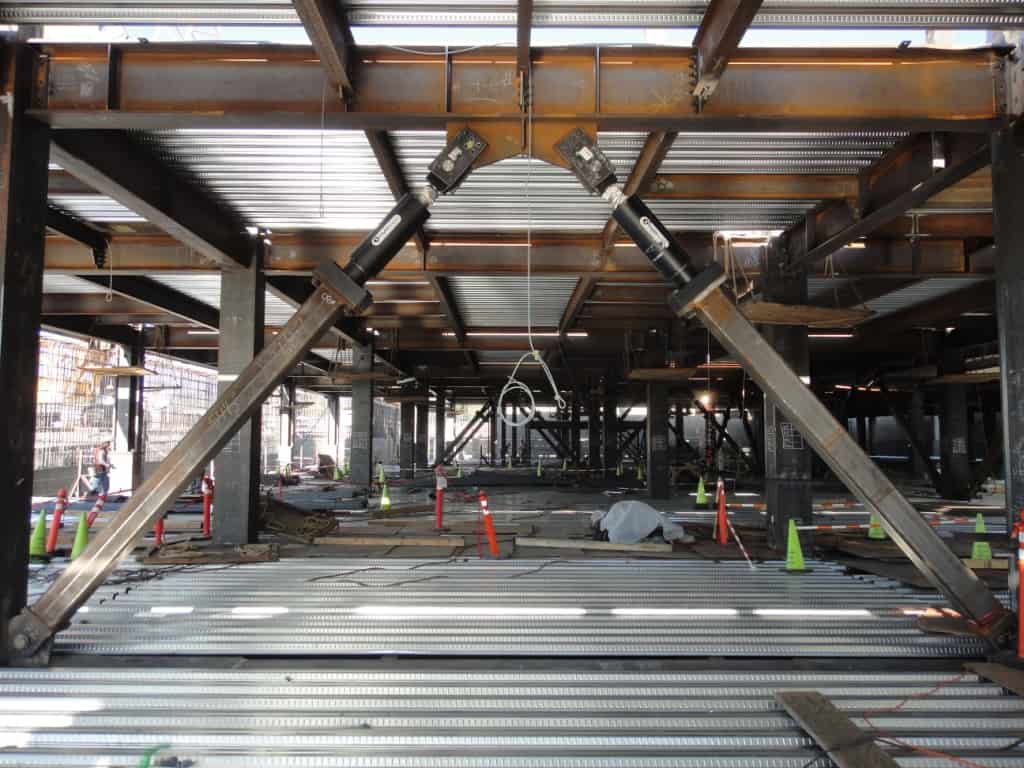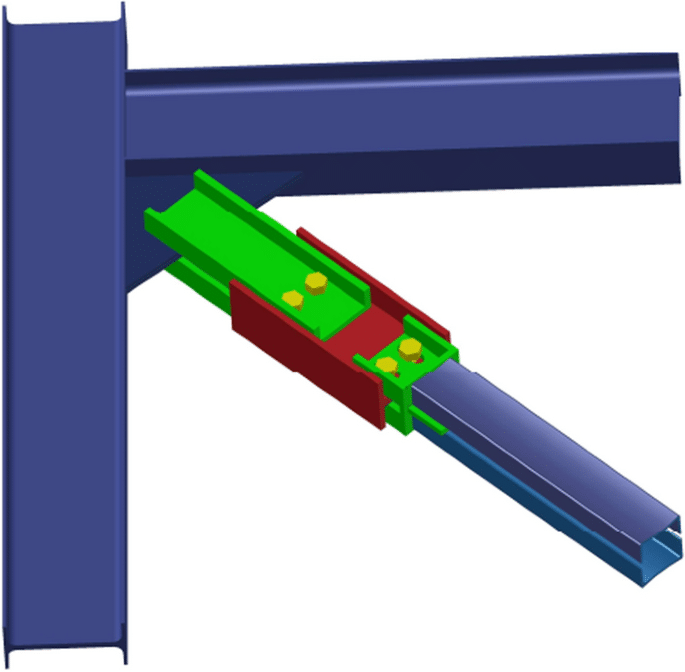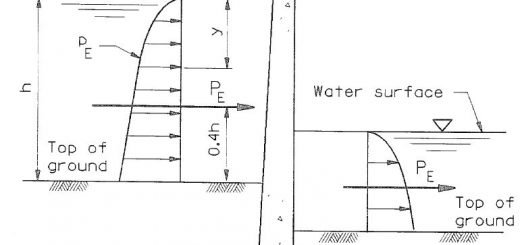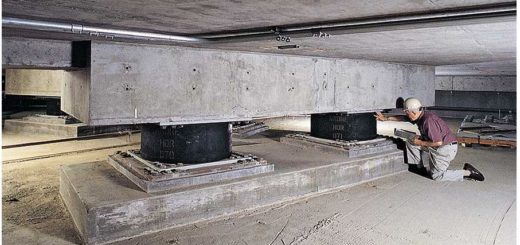Seismic Dampers in Buildings | Types Overview
Building safety and seismic protection are important considerations for civil engineers when designing structures. Seismic dampers in buildings, a relatively new technology, can significantly reduce the risk of damage and destruction that may occur during an earthquake or other seismic event. In this article, we will explore the basic principles of seismic dampers, the role they play in building construction, and their potential benefits for engineers.
Seismic dampers are devices that are installed in buildings to help protect them from damage during an earthquake or other seismic event. The damper is attached to the building at two points and is designed to absorb the energy of the earthquake, which reduces the amount of damage that the building sustains. Seismic dampers can be used in both new construction and retrofit applications.
Seismic dampers are an important part of any earthquake-resistant design. When used in conjunction with other earthquake-resistant measures, such as base isolation and shock-absorbing systems, they can significantly reduce the amount of damage that a building sustains during an earthquake.
Seismic dampers in buildings are an important tool for civil engineers that can help to improve the safety and performance of buildings during an earthquake. As the use of seismic dampers grows, we can expect to see a reduction in the amount of damage that occurs to buildings during these events.
What are the different types of seismic dampers
Seismic dampers are devices that are installed in buildings to help protect them from damage during an earthquake or other seismic event. There are two main types of seismic dampers:
- Viscous Dampers
- Viscoelastic Dampers
- Friction Dampers
- Tuned Mass Damper
- Yielding Dampers
- Magnetic Damper
Viscous Seismic Dampers
Viscous Dampers are used to reduce the shock waves that pass through the ground during earthquakes. Dampers are usually constructed of a heavy fluid contained in cylinders or tanks and are placed along the length of an oil or gas pipeline. The fluid inside each cylinder is undisturbed until it is subjected to a force. When an earthquake strikes, the fluid moves from one end of the cylinder to another and absorbs energy from the seismic wave. The more viscous the liquid, the slower this energy will be absorbed. Viscous Seismic Dampers have been used for over 30 years.
Image courtesy: https://www.taylordevices.com/
Viscoelasitc Dampers
A viscoelastic damper is a device that absorbs shock by converting mechanical energy into another form of energy. The dampers are made from polyurethane and are placed between the floor and the upholstery. The material is able to absorb repetitive impacts through its structure, rather than just at the surface, which is how conventional suspension works.
Viscoelastic dampers are used to eliminate the vibrations caused by any structure or machine. Vibration is a problem for many structures because it can cause damage over time. These damped structures have rubber elements which absorb some of the vibrations in order to ensure that they don’t cause any problems. There are two main types of viscoelastic dampers.
Friction Dampers
Friction dampers are commonly used in industrial machinery and material handling equipment to reduce the amount of friction generated between two moving objects. These friction dampers are made from a variety of materials ranging from steel to urethane as well as metals such as aluminum, stainless steel, brass and more.
The kinetic energy of moving parts is converted into thermal energy by friction dampers, which lessen abrupt stops or prevent excessively high vibration amplitudes. These types of seismic dampers in buildings more cost effective when compared some of other methods.
Tuned Mass Damper
A tuned mass damper is a device that’s installed in buildings to protect them against vibrations. Tuned mass dampers are essentially giant pendulums that slow down swaying as a building vibrates.
A seismic damper or harmonic absorber are other names for a tuned mass damper. It is a mechanical vibration-dampening device that is fixed to buildings and consists of a mass mounted on one or more damped springs. Further, reading refer to article tuned mass damper.
Yielding Dampers
Yield dampers, commonly referred to as metallic dampers, are typically constructed of steel. In order to absorb the energy when a building vibrates during an earthquake, they are made to deform excessively. After a seismic incident, yield dampers typically cannot revert to their previous configuration.
What are the benefits of seismic dampers
There are a number of benefits that seismic dampers offer for civil engineers. First, they can help to reduce the amount of damage that a building sustains during an earthquake. Second, they can help to prolong the life of a building by reducing the amount of stress that is placed on the structure during an earthquake. Third, they can help to improve the safety of a building by reducing the risk of collapse or other failure.
There are a number of benefits that seismic dampers offer for civil engineers.
- First, they can help to reduce the amount of damage that a building sustains during an earthquake.
- Second, they can help to prolong the life of a building by reducing the amount of stress that is placed on the structure during an earthquake.
- Third, they can help to improve the safety of a building by reducing the risk of collapse or other failure.
How are seismic dampers used
Seismic dampers are used in both new construction and retrofit applications. In new construction, they are typically installed between the floors or walls of a building. In retrofit applications, they are often installed on the roof or in the basement. Seismic dampers can also be used in combination with other earthquake-resistant measures, such as base isolation and shock-absorbing systems.
What are the limitations of seismic dampers
One of the limitations of seismic dampers is that they can only protect the building from a certain amount of shaking. Once the damper has reached its maximum capacity, the building will be vulnerable to further damage. Another limitation is that seismic dampers are only effective if they are properly designed and installed. If they are not, they can actually increase the risk of damage to the building.






